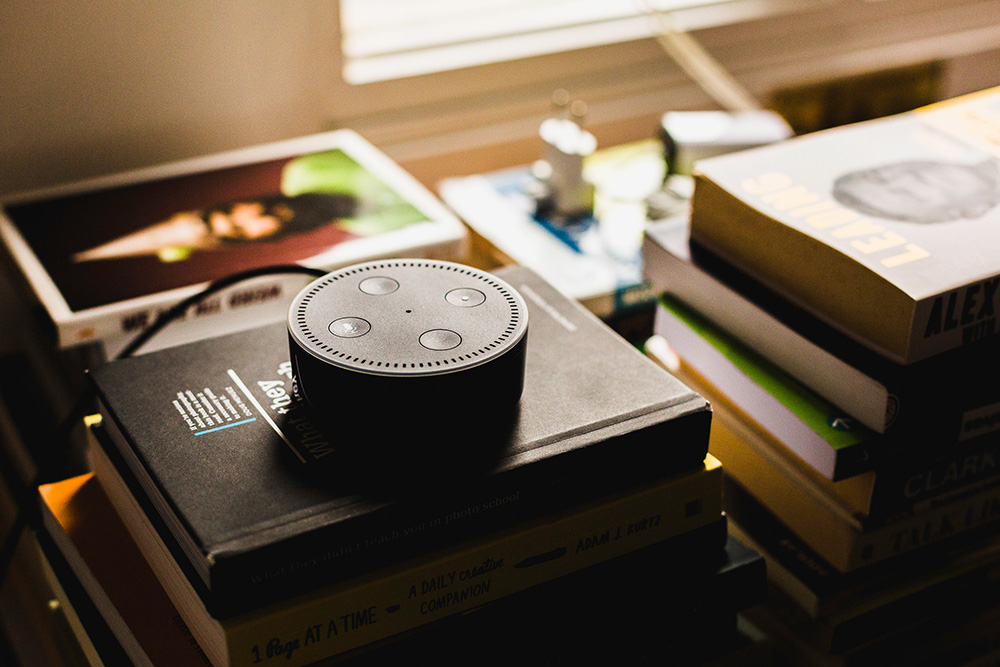In 2018, Dr. Yuefang Zhou and Prof. Dr. Martin Fischer initiated the first international workshop on intimate human-robot relations at the University of Potsdam, “which resulted in the publication of an edited book on developments in human-robot intimate relationships”. This year, Prof. Dr. Martin Fischer, Prof. Dr. Rebecca Lazarides, and Dr. Yuefang Zhou are organizing the second edition. “As interest in the topic of humanoid AI continues to grow, the scope of the workshop has widened. During this year’s workshop, international experts from a variety of different disciplines will share their insights on motivational, social and cognitive aspects of learning, with a focus on humanoid intelligent tutoring systems and social learning companions/robots.” (Website Embracing AI) The international workshop “Learning from Humanoid AI: Motivational, Social & Cognitive Perspectives” will take place on 29 and 30 November 2019 at the University of Potsdam. Keynote speakers are Prof. Dr. Tony Belpaeme, Prof. Dr. Oliver Bendel, Prof. Dr. Angelo Cangelosi, Dr. Gabriella Cortellessa, Dr. Kate Devlin, Prof. Dr. Verena Hafner, Dr. Nicolas Spatola, Dr. Jessica Szczuka, and Prof. Dr. Agnieszka Wykowska. Further information is available at embracingai.wordpress.com/.
Health Care Prediction Algorithm Biased against Black People
The research article “Dissecting racial bias in an algorithm used to manage the health of populations” by Ziad Obermeyer, Brian Powers, Christine Vogeli and Sendhil Mullainathan has been well received by science and media. It was published in the journal Science on 25 October 2019. From the abstract: “Health systems rely on commercial prediction algorithms to identify and help patients with complex health needs. We show that a widely used algorithm, typical of this industry-wide approach and affecting millions of patients, exhibits significant racial bias: At a given risk score, Black patients are considerably sicker than White patients, as evidenced by signs of uncontrolled illnesses.” (Abstract) The authors suggest that the choice of convenient, seemingly effective proxies for ground truth can be an important source of algorithmic bias in many contexts. The journal Nature quotes Milena Gianfrancesco, an epidemiologist at the University of California, San Francisco, with the following words: “We need a better way of actually assessing the health of the patients.”
An Autonomous Ship at Sea
The Mayflower Autonomous Ship (MAS) could be the first vessel to cross the Atlantic that is able to navigate around obstacles and hazards by itself. It will depart from Plymouth, UK on the fourth centenary of the original Mayflower voyage, on 6 September 2020, and will reach Plymouth, USA after an ecxiting tour, dedicated to science. “The project was put together by marine research and exploration company ProMare in an effort to expand the scope of marine research. The boat will carry three research pods equipped with scientific instruments to measure various phenomena such as ocean plastics, mammal behaviour or sea level changes.” (ZDnet, 16 October 2019) According to ZDnet, IBM has now joined the initiative to supply technical support for all navigation operations. It is important that the futuristic ship is not only careful with things, but also with animals. In this context, insights of animal-machine interaction and machine ethics might be useful. Ultimately, the excursion will help the marine mammals by obtaining data on their behaviour.
Ethics in AI for Kids and Teens
In summer 2019, Blakeley Payne ran a very special course at MIT. According to an article in Quartz magazine, the graduate student had created an AI ethics curriculum to make kids and teens aware of how AI systems mediate their everyday lives. “By starting early, she hopes the kids will become more conscious of how AI is designed and how it can manipulate them. These lessons also help prepare them for the jobs of the future, and potentially become AI designers rather than just consumers.” (Quartz, 4 September 2019) Not everyone is convinced that artificial intelligence is the right topic for kids and teens. “Some argue that developing kindness, citizenship, or even a foreign language might serve students better than learning AI systems that could be outdated by the time they graduate. But Payne sees middle school as a unique time to start kids understanding the world they live in: it’s around ages 10 to 14 year that kids start to experience higher-level thoughts and deal with complex moral reasoning. And most of them have smartphones loaded with all sorts of AI.” (Quartz, 4 September 2019) There is no doubt that the MIT course could be a role model for schools around the world. The renowned university once again seems to be setting new standards.
Permanent Record
The whistleblower Edward Snowden spoke to the Guardian about his new life and concerns for the future. The reason for the two-hour interview was his book “Permanent Record”, which will be published on 17 September 2019. “In his book, Snowden describes in detail for the first time his background, and what led him to leak details of the secret programmes being run by the US National Security Agency (NSA) and the UK’s secret communication headquarters, GCHQ.” (Guardian, 13 September 2019) According to the Guardian, Snowden said: “The greatest danger still lies ahead, with the refinement of artificial intelligence capabilities, such as facial and pattern recognition.” (Guardian, 13 September 2019) The number of public appearances by and interviews with him is rather manageable. On 7 September 2016, the movie “Snowden” was shown as a preview in the Cinéma Vendôme in Brussels. Jan Philipp Albrecht, Member of the European Parliament, invited Viviane Reding, the Luxembourg politician and journalist, and authors and scientists such as Yvonne Hofstetter and Oliver Bendel. After the preview, Edward Snowden was connected to the participants via videoconferencing for almost three quarters of an hour.
Dialects and Accents as a Challenge for Voice Assistants
Voice assistants often have difficulties with dialects. This was already evident in the case of Siri in 2012. In German-speaking Switzerland, she did not always understand users. There is a similar problem in the UK. Alexa and other voice assistants have trouble understanding the accents there. According to the Guardian, the BBC is preparing to launch a rival to Amazon’s Alexa called Beeb (a nickname for the public service broadcaster, just like “Auntie”). “The voice assistant, which has been created by an in-house BBC team, will be launched next year, with a focus on enabling people to find their favourite programmes and interact with online services. While some US-developed products have struggled to understand strong regional accents, the BBC will … ask staff in offices around the UK to record their voices and make sure the software understands them.” (Guardian, 27 August 2019) Auntie has no plans to develop or offer a physical product such as Amazon’s Echo speaker or a Google Home device. Instead, the Beeb software will be built into the BBC online services. It remains to be seen whether this will solve all problems of comprehension.
An AI System for Multiple-choice Tests
According to the New York Times, the Allen Institute for Artificial Intelligence unveiled a new system that correctly answered more than 90 percent of the questions on an eighth-grade science test and more than 80 percent on a 12th-grade exam. Is it really a breakthrough for AI technology, as the title of the article claims? This is a subject of controversy among experts. The newspaper is optimistic: “The system, called Aristo, is an indication that in just the past several months researchers have made significant progress in developing A.I. that can understand languages and mimic the logic and decision-making of humans.” (NYT, 4 September 2019) Aristo was built for multiple-choice tests. “It took standard exams written for students in New York, though the Allen Institute removed all questions that included pictures and diagrams.” (NYT, 4 September 2019) Some questions could be answered by simple information retrieval. There are numerous systems that access Google and Wikipedia, including artifacts of machine ethics like LIEBOT and BESTBOT. But for the answers to other questions logical thinking was required. Perhaps Aristo is helping to abolish multiple-choice tests – not so much because it can solve them, but because they are often not effective.
The System that Detects Fear
Amazon Rekognition is a well-known software for facial recognition, including emotion detection. It is used in the BESTBOT, a moral machine that hides an immoral machine. The immoral is precisely caused by facial recognition, which endangers the privacy of the user and his or her informational autonomy. The project is intended not least to draw attention to this risk. Amazon announced on 12 August 2019 that it has improved and expanded its system: “Today, we are launching accuracy and functionality improvements to our face analysis features. Face analysis generates metadata about detected faces in the form of gender, age range, emotions, attributes such as ‘Smile’, face pose, face image quality and face landmarks. With this release, we have further improved the accuracy of gender identification. In addition, we have improved accuracy for emotion detection (for all 7 emotions: ‘Happy’, ‘Sad’, ‘Angry’, ‘Surprised’, ‘Disgusted’, ‘Calm’ and ‘Confused’) and added a new emotion: ‘Fear’.” (Amazon, 12 August 2019) Because the BESTBOT accesses other systems such as MS Face API and Kairos, it can already recognize fear. So the change at Amazon means no change for this artifact of machine ethics.
An Exosuit for Walking and Running
“Walking and running require different gaits, with each type of motion putting a greater bias on different muscles and joints.” (Science 2019) Exoskeletons can support people in many ways. However, it is not easy for them to adjust to different types of motion. Jinsoo Kim and his co-authors discuss a possible solution in their article “Reducing the metabolic rate of walking and running with a versatile, portable exosuit”, published in the current issue of Science (16 August 2019). “They developed a soft, fully portable, lightweight exosuit that is able to reduce the metabolic rate for both running and walking by assisting each motion via the hip extension … A waist belt holds most of the mass, thus reducing the cost of carrying the suit. By tracking the motion of the user, the suit is able to switch modes between the two types of motion automatically.“ (Science 2019) There are many possible applications for the exosuit, both civil and military. The article can be downloaded here.
The Resurrection of Dead Authors
lyrikline.org is an interesting and touching project. The writers themselves read their works. You can listen to Ingeborg Bachmann as well as Paul Celan. Spoken literature has been booming in Europe and the USA for about 15 years. The Chinese discovered audio books some time ago. Basically it is time-consuming and expensive to produce such books professionally. Moreover, the authors are not always available. The Chinese search engine Sogou wants to solve this problem with the help of visualization technology and artificial intelligence. It creates avatars of the authors who speak with the voice of the authors. “At the China Online Literature+ conference, the company announced that the first two authors to receive this avatar treatment will be Yue Guan and Bu Xin Tian Shang Diao Xian Bing … If these first AI author avatars are well-received, others could follow – and that could just be the jumping-off point. A company could produce book readings by deceased authors, for example, as long as enough audio and video footage exists. Eventually, they could even incorporate hologram technology to really give bibliophiles the feeling of being at their favorite author’s reading.” (futurism.com, 15 August 2019) So you could have Ingeborg Bachmann or Charles Bukowski read all of their own texts and watch them, many years after their death. Whether the results really sound like the originals, whether they influence us just as emotionally, can be doubted. But there is no doubt that this is an exciting project.









